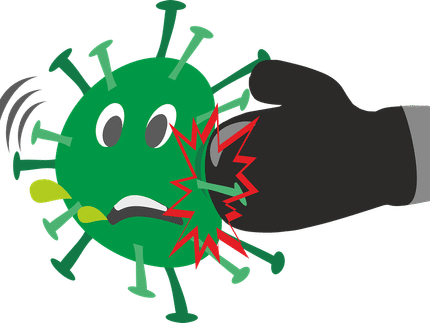Banana protein foils human viruses
A sugar-binding protein isolated from bananas has previously been shown to be a potent inhibitor of infection by several families of viruses that are pathogenic to humans. The protein, called BanLec, does so by binding to sugar molecules that are attached to viral coat proteins, effectively blocking virus entry into host cells. However, BanLec also acts as a so-called mitogen that activates cell proliferation, which could lead to deleterious side-effects. However, an international research collaboration has now demonstrated that BanLec can be modified in such a way that its antiviral properties are retained, while its mitogenic effect is eliminated. Professor Hans-Joachim Gabius, who holds the Chair of Physiological Chemistry in the Faculty of Veterinary Medicine at LMU, played a leading role in the design and successful completion of the project. Its findings could pave the way to a novel class of antiviral agents. “In addition, it could facilitate the development of custom-made tools for further investigation of the mechanisms that underlie sugar-protein interactions, which are still poorly understood,” says Gabius.
Sugars as docking stations
Not only genes and proteins serve as repositories of biological information, chains of sugar molecules found on cell surfaces – collectively called glycans – can also convey highly specific messages when bound by their cognate receptors. Moreover, such interactions are directly involved in the regulation of many processes that are critical for survival, such as cell growth, wound healing and immune responses. Because each particular type of sugar can be attached to its neighbors in a whole variety of ways, glycan molecules are structurally highly diverse, since both the sequence of different sugars and their modes of linkage can be crucial for their informational content and biological function. The resulting “sugar code” is read and interpreted by specialized binding proteins called lectins, which recognize specific glycan structures and initiate the appropriate biochemical reactions.
BanLec is a lectin that binds to glycan structures containing the monosaccharide mannose. This sugar unit is found in the glycosylated envelope protein (gp120) that mediates the interaction between the human immunodeficiency virus (HIV-1) responsible for AIDS and its target cells. Moreover, BanLec has been shown to block HIV infection by masking the portion of gp120 recognized by the cell-surface receptor required for viral uptake into the immune cells known as T-cells. “Since other viruses, such as hepatitis C virus, coronaviruses and influenza viruses, also bear mannose units in their envelope proteins, BanLec could provide the basis of a broad-spectrum antiviral agent,” says Gabius. However, as alluded to above, binding of BanLec to T-cells causes them to divide, and this activity can trigger undesirable immune responses and inflammatory reactions. In addition, in the case of HIV, this property could counteract the antiviral action of BanLec by stimulating proliferation of the T-cells in which the virus replicates.
Abrogation of T-cell activation
In the new study, research teams led by Professor David Markovitz (University of Michigan, Ann Arbor) succeeded in disabling the mitogenic effect of BanLec, which actually requires its simultaneous binding to two distinct receptors. They achieved this by substituting the amino acid threonine for the histidine normally found at a specific position in the lectin. Subsequent in vitro und in vivo experiments confirmed that the modified lectin retains the ability to prevent infection by HIV, hepatitis C and influenza viruses. “We were able to show that the modified BanLec still binds to T-cells, but does not activate them, as it is unable to cross-link the two surface receptors required for this purpose,” Gabius explains. “Thus we have succeeded, for the first time, in putting together all the parts of the puzzle required to obtain a complete picture of this sugar-lectin interaction. This not only constitutes an important advance in the search for effective antiviral agents, it should also help to enhance our understanding of the sugar code.”
The next step is to test the effects of the modified BanLec on a broader range of viruses. In order to gain further insight into the lectin’s mode of action, Gabius himself will focus on identifying the sets of receptors recognized by the natural and modified versions of BanLec. In addition, the researchers intend to take a closer look at endogenous (human) lectins, with a view to optimizing their properties for various applications. “One major advantage of designer lectins lies in the fact that the risk of resistance is lower, because glycans cannot be altered as easily as protein structures,” Gabius points out.
Original publication
Michael D. Swanson et al.; "Molecular Engineering of a Therapeutic Lectin by Uncoupling Mitogenicity from Antiviral Activity"; Cell 2015


























































